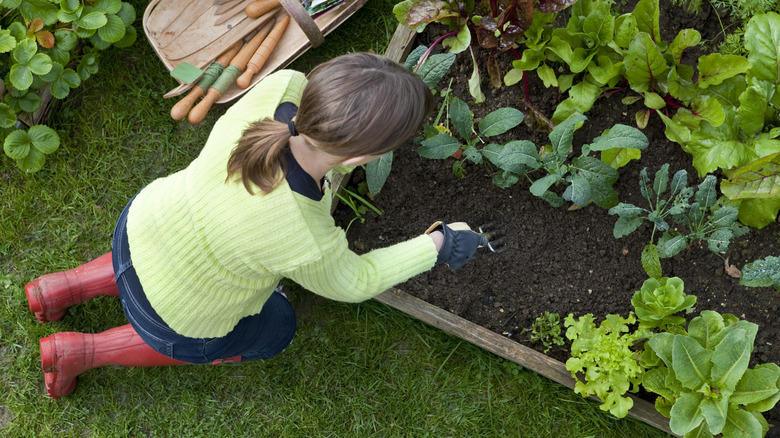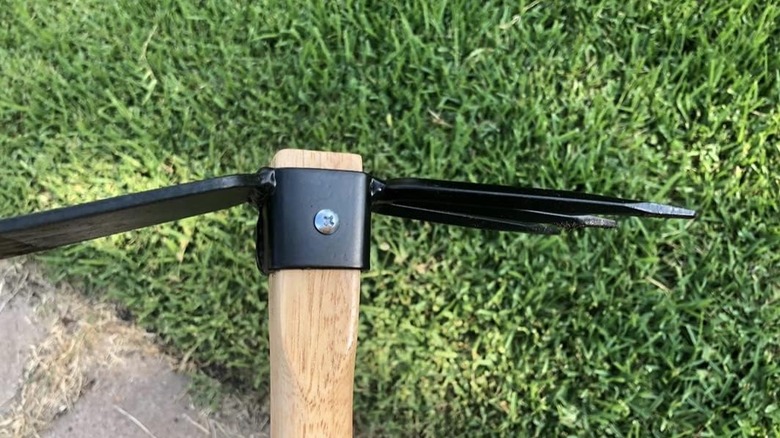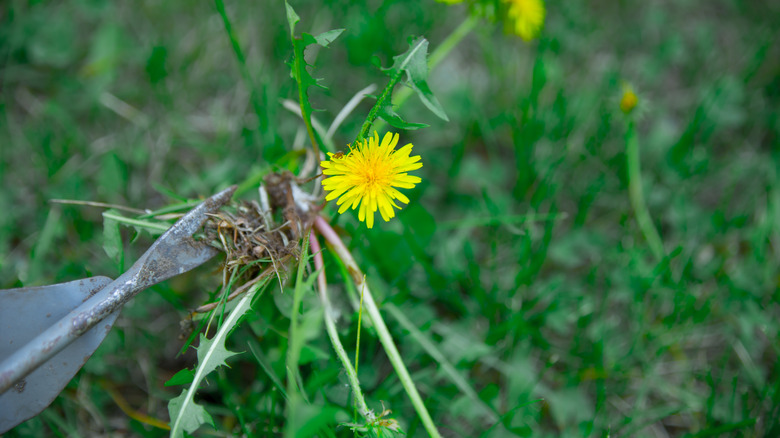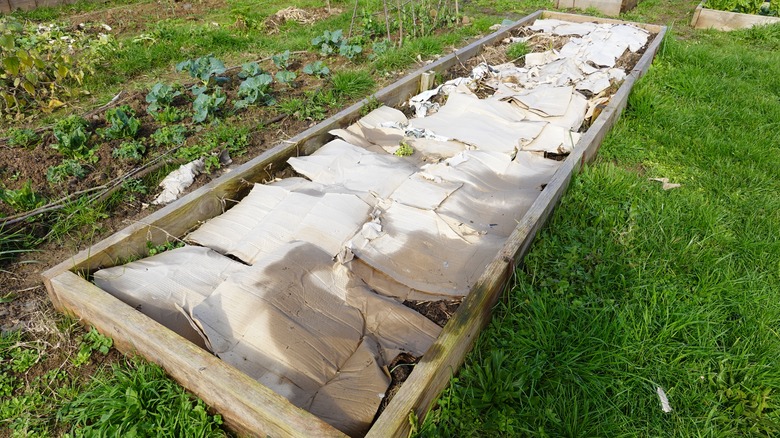Our Master Gardener's Top Tools For Banishing Pesky Weeds From Raised Beds
We may receive a commission on purchases made from links.
Weeds are an unending battle for most gardeners. There are many ways to prevent problems, like giving your garden mulch for extra nutrients while blocking out weeds, but even when you do everything right, those annoyances will pop up. They're stubborn like that. Since you will undoubtedly fight a battle with unwanted plants in your raised beds, you'll need to be prepared with a hand cultivator and weeder to make the job easier. If you're facing a bed that's been taken over by weeds, materials for sheet mulch are easy to acquire and can save you a lot of work.
Some weeds are easier to remove than others. If your soil is loose, you can often just grab and pull plants with shallow root systems like chickweed, purslane, and henbit. Other plants are more challenging to remove, especially if they have dense or deep roots, including Johnson grass and dandelions. Even though I am happy to let wild violets grow in my yard, I remove them from my garden, and sometimes, their rhizome roots can be difficult to deal with. These two simple hand tools are very useful in my gardens.
Hand cultivator
Although I have many garden resources, including a set of children's garden tools, I do have a favorite. If I had to choose only one tool for my garden, it would be a hand cultivator with sturdy forks on one side and a flat blade on the other, like this one from Amazon.com. This single hand tool does so many jobs. The forked side helps loosen compacted soil, making it easier to remove weeds, even those with established or deep roots. For extra stubborn plants, like clumps of Johnson grass, you can use some force to wedge the forks into the root system and give it a strong tug to dislodge them. Who needs a gym when you have a garden?
The reason I like the two-sided hand cultivator over the hand fork is because the flat edge on the other side works for different types of weeds. Basically, it's a short handle hoe, perfect for scraping the green tops off tiny weed sprouts. Separating the greens from the roots keeps the seedlings from getting established. When I see a lot of weed or grass seeds sprouting in my garden, I scrape the surface of the soil with that flat edge, then flip it over to the forked side and work them into the soil to decompose.
Hand weeder
A hand weeder is a simple and inexpensive tool that works for removing one weed at a time. Although it's not particularly heavy-duty, it works exceptionally well for plants with long tap roots, like yellow dock and dandelions. Hand weeders consist of a shaft with a forked end that makes it easier to insert deep into the soil to get those stubborn, deep-rooted weeds.
Some hand weeders have extra features like this one on Amazon, which combines the forked end with a wider shaft featuring a ruler. If you're looking for a weeder that serves multiple purposes, like helping you determine how deep to plant a bulb, this is a good option. It's also better for removing dense roots, like those on wild violets. On the other hand, if you are removing stubborn roots in a tight space like a raised bed, a simple, ergonomic option can help reduce strain, making this style ideal. Of course, if you're like me, you'll want both.
How to deal with a bed full of weeds
If gardening season got away from you and you're facing a raised bed full of weeds, don't give up. You don't need to remove each weed by hand – that would be overwhelming! When faced with many weeds, sheet mulch is a simple answer. This process involves multiple layers of newspaper, brown paper bags, or cardboard — whatever you have available. Cover the top of your raised bed with the paper product of your choice and top with mulch. I like using straw because it's lightweight, easy to spread, and breaks down quickly. Don't use hay, which has seeds and will create new problems. Shredded leaves or natural wood mulch are also excellent options.
Once you have added these layers to the top of your soil, it doesn't take long for the weeds to suffocate and die. If you're starting in the winter, you can work all these materials and the decomposed weeds into the soil and plant your garden in late spring; however, if you cannot wait long to plant, there's another option. Lay your sheet mulch and cut holes where you want to place your plants. This won't work well for closely planted veggies like leaf lettuce, radishes, or carrots, but if you are planting peppers or tomatoes that require wider spacing, you can have your sheet mulch and a veggie garden in the same season. Remove any visible weeds by hand that pop up near the plants as needed.




